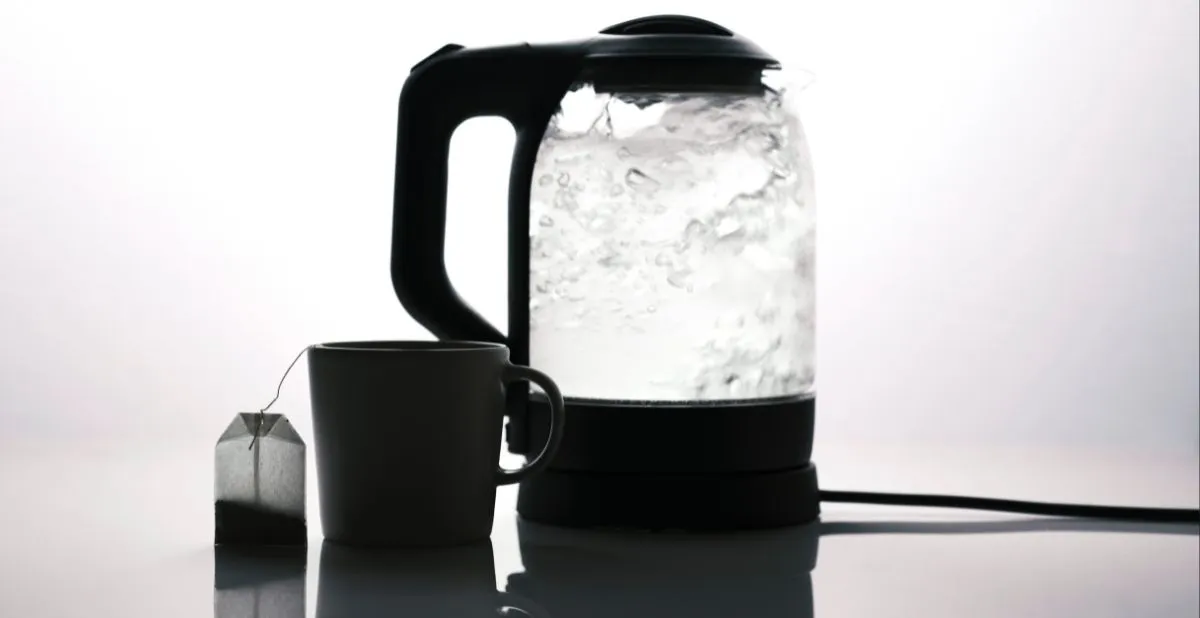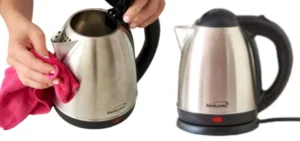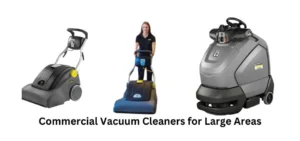How to Use an Electric Kettle? Electric kettles have become an essential appliance in many homes, providing convenience and efficiency in boiling water for various purposes. Whether you’re brewing a cup of tea, brewing coffee, or whipping up quick meals, learning how to use an electric kettle properly can enhance your experience and simplify your daily routine. In this comprehensive guide, we’ll walk you through the step-by-step process of using an electric kettle, provide tips for safe operation, answer frequently asked questions, and explore the advantages of electric kettles over traditional stovetop kettles.
01. What is the electric kettle?
Electric kettles are like magic boxes that make boiling water very easy. They are different from regular stovetop kettles because they use electricity to generate heat. This makes it faster and better at boiling water. People who love tea and coffee like electric kettles. It’s also great for preparing quick meals and other drinks.
02. why use an electric kettle?
- Rapid boiling: Electric kettles heat water faster than regular kettles, saving you time. For example: “It boils water in a very short time, so you won’t have to wait long for tea.”
- Easy to use: Simply plug the base, add water, and press the button – simple! Example: “Using it is as easy as pressing a button after plugging it in.”
- Versatility: It’s not just for tea, it’s great for making coffee, hot cocoa, or even instant meals. For example: “You can make more than just tea, it’s good for coffee or quick meals too.”
- Precise temperature control: Some models allow you to choose the water temperature, making them ideal for different drinks. For example: “You can choose the water temperature you want, which is great for getting the right temperature for your coffee or tea.”
- Suitable for various tasks: Use it for cooking, such as making soup or oatmeal, and even for cleaning baby bottles. For example: “It’s not just for drinks; you can use it to make soup, cook oatmeal, or help clean baby’s bottle.”
- Save time and energy: Saves energy and gets the job done quickly. Example: “It doesn’t waste a lot of energy and gets things done quickly – good for saving time and electricity.”
03. What can you make with an electric kettle?
- Quickly prepare your favorite tea or coffee using hot water from the kettle.
- Make a warm cup of hot cocoa by mixing chocolate powder with hot water.
- Speed up the soup-making process by pouring hot water over your instant soup mixes.
- Cook instant oatmeal by adding hot water to the oats for a quick and easy breakfast.
- Prepare instant noodles by pouring hot water over them in a bowl.
- Make a simple ramen bowl by adding hot water to the ramen noodles and seasoning.
- Cook cup noodles easily by filling them with hot water from the kettle.
- Sterilize and clean baby bottles by pouring hot water into them.
- Start the process of cooking rice or pasta using hot water from the kettle.
- Make warm, spiced drinks like cider or wine by starting with hot water.
04. How to use an electric kettle
STEPS TO USE AN ELECTRIC KETTLE
How to use an electric kettle: Using an electric kettle is a process that involves a few simple steps. Whether you’re using a brand-new kettle or one that has been old in your kitchen, it’s essential to familiarize yourself with the specific instructions provided in the owner’s manual. Here is a general guide to using an electric kettle effectively:
Step-01: Setting up the Kettle
If you are using a new electric kettle, the first step is to prepare the base. Place the base on a flat surface, making sure the cord reaches a nearby electrical outlet. Once the base is in position, place the kettle securely on top of it.
Step-02: Washing and Rinsing the Kettle
Before using the electric kettle for the first time, it is recommended to wash it with soap and water or fill it with water and boil it. This process helps remove any manufacturing residue and ensures your kettle is clean and ready for use.
Step-03: Adding Water to the Kettle
When adding water to the electric kettle, pour only the amount you need. It is important to consider the amount required, as adding more water will take longer to boil or reach the desired temperature. Consider any maximum fill indicators provided by the manufacturer to prevent overfilling.
Step-04: Securely Place the Kettle on the Base
Although not all electric kettles come with a separate base, if you have one, make sure it is securely placed on the base. This step ensures proper contact between the boiler and the heating element, allowing the water to be heated efficiently.
Step-05: Selecting Functions and Turning on the Kettle
Once the kettle is securely placed on the base, it’s time to turn it on. Most electric kettles are equipped with a simple on/off switch. However, some models offer additional functionality, such as temperature control, allowing you to heat water to the precise temperature appropriate for your specific drink or recipe. Familiarize yourself with your boiler’s controls and choose the appropriate function.
Step-06: Monitoring the Kettle’s Progress
When the water is hot, your electric kettle may have indicator lights, icons, or audible tones to indicate that the water is ready. Some kettles turn off automatically once the water reaches a boil or a certain temperature, while others offer the option of waiting to maintain the set temperature for a certain period. Pay attention to these pointers to ensure optimal timing for your brewing or cooking needs.
Step-07: Pouring the Water Safely
When the water is ready, carefully pour it over the coffee grounds, tea bag, or tea infuser. If preparing loose-leaf tea, pour boiling water into a teapot. It is essential to follow the recommended steeping time for your specific beverage to achieve the desired flavor. Additionally, electric kettles can be used to pour hot water into bowls for making oatmeal or pasta, or into baby bottles for preparing formula. Use caution when pouring to avoid splashing boiling water.
Step-08: Emptying the Kettle
After using boiling water, it’s a good idea to throw away any excess water you didn’t use. This step prevents water from remaining inside the kettle, which may affect its performance. In addition, it is recommended to unplug the kettle from the electrical outlet after use for safety purposes.
05. How to make coffee in the electric kettle
Tea lovers often rely on electric kettles for precise temperature control, which is crucial for brewing different types of tea. Whether you’re a fan of black tea, green tea, herbal tea, or any other type, using an electric kettle can enhance the flavor and aroma of your tea. Here are some basic factors to consider when making tea using an electric kettle:
How long to steep a tea bag
Steeping is the process of steeping tea leaves in hot water to extract their flavors, aromas, and other beneficial compounds. During this stage fermentation or extraction takes place. The quality of tea depends largely on the steeping time and water temperature. For most teas, the recommended steeping time is 2 to 5 minutes.
Recommended Tea-to-Water Ratio
To achieve the desired strength and flavor, it is important to maintain the proper tea-to-water ratio. According to general guidelines, you can use 1 teaspoon of dried tea leaves for every 6 to 8 ounces of water. Adjust the ratio according to your personal preference and the specific type of tea you are using.
Optimal Water Temperature and Steeping Time
Different types of tea require specific water temperatures and steeping times to obtain their best qualities. Here is a basic guide to help you determine the ideal temperature and steeping time for some common tea varieties:
- Green tea: Water temperature between 160°F (71°C) and 180°F (82°C). Steep for 1 to 3 minutes.
- Black tea: Water temperature between 200°F (93°C) and 212°F (100°C). Steep for 3 to 5 minutes.
- Oolong tea: Water temperature between 190°F (88°C) and 205°F (96°C). Steep for 3 to 5 minutes.
- Herbal tea: Water temperature between 200°F (93°C) and 212°F (100°C). Steep for 5 to 7 minutes.
These are general guidelines, and it’s always best to refer to the specific instructions provided by the tea manufacturer or consult a tea expert for optimal brewing recommendations.
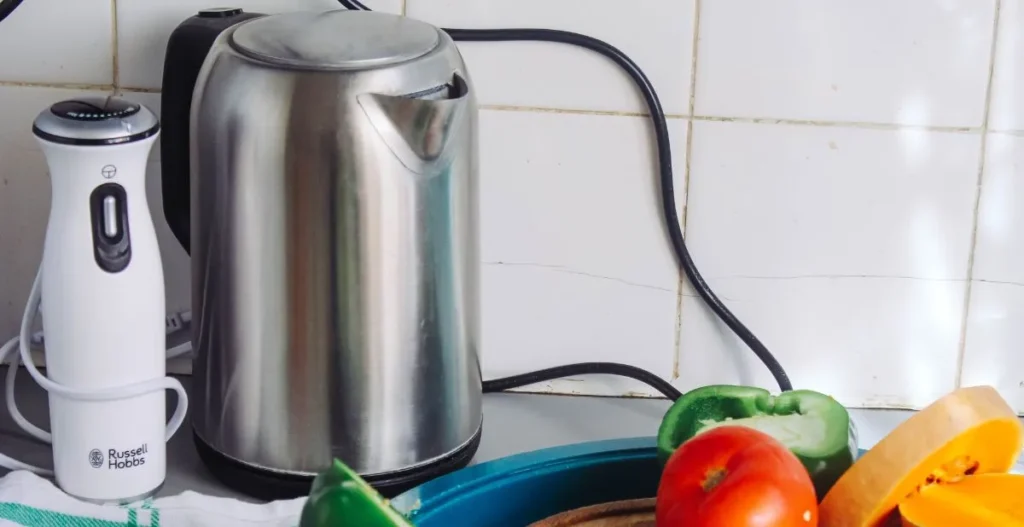
Different types of tea and their benefits
With countless tea varieties available, it’s important to understand the specific steeping requirements for each type. Here are some popular tea types and their unique characteristics:
- Green Tea: Known for its fresh and delicate flavor, green tea requires lower water temperatures to prevent bitterness. Steeping green tea for too long or using water that is too hot can result in an unpleasant taste.
- Black Tea: Bold and strong, black teas can withstand higher water temperatures and longer steeping times. This type of tea is often enjoyed with milk or sweeteners, making it a popular choice for breakfast or afternoon tea.
- Oolong tea: Oolong tea falls between green and black tea in terms of the level of oxidation. It offers a wide range of flavors, from floral to fruity, depending on the specific variety. Water temperature and steeping time can vary between different types of oolong tea, so check the packaging or expert recommendations for the best results.
- Herbal tea: Unlike real tea, herbal tea is not derived from the Camellia sinensis plant. Instead, they are made from a variety of herbs, flowers, and fruits. Herbal teas often require higher water temperatures and longer steeping times to extract their natural flavors and potential health benefits.
Experimenting with different teas, water temperatures, and steeping times can help you discover your personal preferences and create the perfect cup of tea every time.
06. Safety Precautions for Using an Electric Kettle
Although electric kettles are generally safe and easy to use, it is important to follow certain precautions to ensure your safety and the longevity of the appliance. Here are some basic safety tips when using an electric kettle:
Following the Instruction Manual
Each electric kettle comes with an instruction manual that provides specific instructions for safe operation. It is necessary to read and understand the manual before using the kettle for the first time. Familiarize yourself with the controls, safety features, and any specific instructions or warnings provided by the manufacturer.
Avoiding Overfilling the Kettle
To avoid accidents and spills, avoid overfilling the electric kettle. Pay attention to any maximum filling indicators provided by the manufacturer. Overfilling the kettle may cause boiling water to overflow, which may result in burns or damage to the kettle.
Preventing Water Damage
Electric kettles are electrical appliances, so it is important to keep them away from water or other liquids. Never immerse the base, cord, plug or kettle body in water or any other liquid. This can result in electric shock, equipment damage, or even electrical fires.
Unplugging the Kettle when Not in Use
When you finish using the electric kettle, make sure to unplug it from the electrical outlet. This prevents any accidental activation of the boiler and reduces the risk of electrical hazards.
Additional Safety Tips
In addition to the above precautions, here are some additional safety tips to keep in mind when using an electric kettle:
- Check the boiler cord regularly for any signs of damage. If the cord is frayed or damaged, stop using it and have it repaired or replaced by a professional.
- Keep the electric kettle away from flammable materials, such as curtains or paper towels, to prevent potential fire hazards.
- Avoid touching the outside of the kettle when it is hot. Use the handle or any designated cool-touch areas to prevent burns.
- If you have children at home, store the electric kettle out of their reach and explain to them the potential dangers associated with hot water.
By following these safety precautions, you can enjoy the convenience of an electric kettle without compromising your well-being or the safety of your home. - Electric kettle problems and solutions are the most important issues. You need to check it carefully.
07. Boiling Time: How Long Does an Electric Kettle Take?
One important advantage of electric kettles is their ability to boil water quickly. The boiling time of an electric kettle depends on several factors, including the amount of water inside and the capacity of the kettle. Here’s what you need to know about boiling time:
Factors Affecting Boiling Time
The volume of water inside the kettle is a critical factor in determining the boiling time. The more water you pour, the longer it will take to heat up. It is important to add only the amount of water you need to avoid unnecessary waiting time.
The capacity of the electric kettle also affects the boiling time. KitchenAid® kettles, for example, range in capacity from 1 liter to 1.7 litres. Small kettles generally take less time to boil because they contain less water.
Optimal Water Volume for Faster Boiling
If you want to save time and energy, it is better to boil only the necessary amount of water. Adding excess water not only lengthens the boiling time but also wastes energy. Be aware of your water needs and adjust the volume accordingly.
Comparing Electric Kettles vs. stovetop Kettles
When it comes to boiling time, electric kettles tend to outperform traditional stovetop kettles. Electric kettles can generate and transmit heat energy more efficiently, causing water to boil faster. The integrated heating element ensures that a higher percentage of thermal energy is used, reducing the time it takes to reach the boiling point.
Stove boilers, on the other hand, rely on a burner for heat, which can be slower and less efficient. The heat generated by the stove burner has a greater opportunity to escape, resulting in longer boiling times.
Overall, if speed and efficiency are important to you, an electric kettle is the best choice for boiling water.
08. Taking Care of Your Electric Kettle
To ensure the longevity and optimal performance of your electric kettle, you must take proper care of it. Here are some tips for maintaining and cleaning the electric kettle:
Emptying the Kettle after Use
After you have finished using boiling water, it is important to pour out any remaining water from the kettle. Leaving water inside the kettle for long periods may cause mineral deposits to build up, affecting the taste of future drinks and possibly damaging the kettle. Emptying the kettle after each use helps maintain its cleanliness and functionality.
How to clean an electric kettle with vinegar
Over time, mineral deposits can build up inside the kettle due to the presence of dissolved minerals in tap water. This buildup, known as limescale, can affect your kettle’s performance and the taste of your drinks. Regular descaling helps remove these deposits from the boiler and keep the boiler in optimum condition.
To describe your electric kettle, follow these steps:
- Mix equal parts water and white vinegar or lemon juice in a kettle.
- Leave the mixture until it boils.
- Leave the solution in the kettle for 15-20 minutes.
- Empty the kettle and rinse it well with clean water.
- Wipe the inside and outside of the kettle with a soft cloth.
Avoid using abrasive cleaners or scouring pads, as they may scratch the surface of the kettle. In addition, never immerse the kettle in water or immerse it in any cleaning solution. Cleaning your kettle regularly not only improves it is performance. but also ensures that your drinks taste the best.
Avoiding Heating Liquids Other Than Water
Electric kettles are specially designed to heat and boil water. It is important to avoid heating any other liquids unless expressly permitted by the manufacturer. Different liquids boil at different temperatures and have unique properties that may affect the performance of the boiler or damage the inside of the boiler. Always refer to your owner’s manual for specific instructions on what can and cannot be heated in an electric kettle.
09. Exploring KitchenAid® Electric Kettles
When it comes to electric kettles, KitchenAid® offers a range of options specifically designed to meet your brewing needs and complement the aesthetics of your kitchen. Let’s take a closer look at some of the features and benefits of KitchenAid® electric kettles:
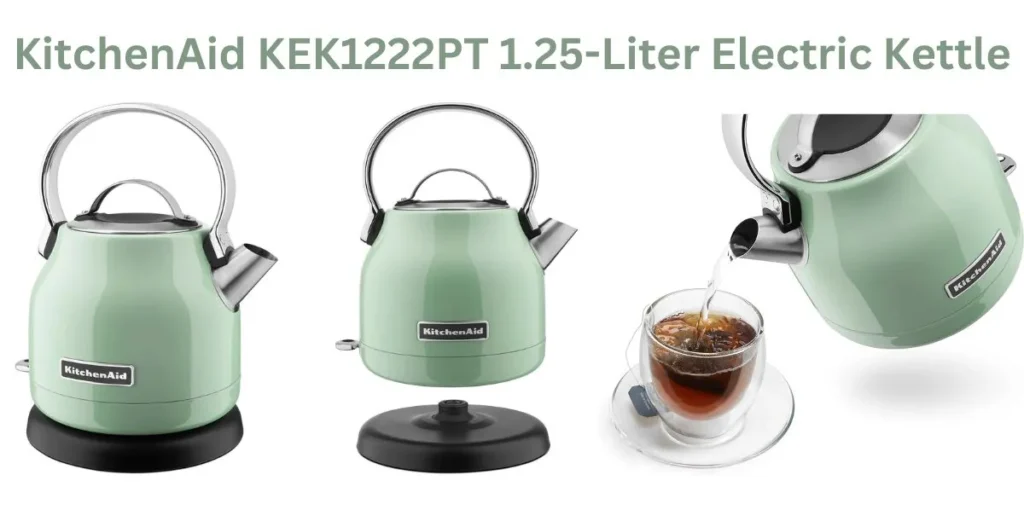
Variable Temperature Settings for Precision Brewing
KitchenAid® electric kettles are equipped with variable temperature settings, allowing you to heat water to precise temperatures for different drinks and recipes. Whether you’re brewing delicate green tea or brewing a rich cup of coffee, the ability to control the water temperature ensures optimal flavor extraction and a satisfying drinking experience.
Stylish and Functional Design
KitchenAid® electric kettles are not only practical, they are also aesthetically pleasing. With their sleek, modern designs, these kettles add a touch of elegance to any kitchen countertop. Durable construction and high-quality materials ensure long-lasting performance, making it a worthwhile investment.
Precision Gooseneck Electric Kettle for Pour-over Coffee
For coffee lovers who appreciate the art of pour-over brewing, KitchenAid® offers the Gooseneck Precision Electric Kettle. This specialty kettle features a unique spout that allows for precise pour control, ensuring even extraction and a perfectly brewed cup of coffee. Variable temperature settings enhance the brewing process, unlocking the full potential of your favorite coffee beans.
10. Conclusion and Final Thoughts
Electric kettles have revolutionized the way we prepare hot drinks and simplified our daily routine. Thanks to their convenience, speed and diverse functions, electric kettles have become an indispensable appliance in many kitchens. By following the correct steps for using an electric kettle, you can prepare your favorite drinks and even experiment with different types of tea, coffee brewing methods, and instant meal preparations.
Remember to take safety precautions, such as avoiding overfilling the kettle, keeping it away from water, and unplugging it when not in use. Regular emptying and descaling of the kettle ensures optimal performance and longevity of the appliance.
If you’re in the market for an electric kettle, consider exploring the KitchenAid® range, which offers variable temperature settings, sleek designs, and specialized features for coffee lovers. With the KitchenAid® Electric Kettle, you can elevate your brewing experience and bring a café vibe to your kitchen.
Enjoy the convenience, efficiency, and versatility that electric kettles offer, and enjoy the perfect cup of tea or coffee whenever you want. Let the electric kettle be your trusted companion on your culinary adventures.

